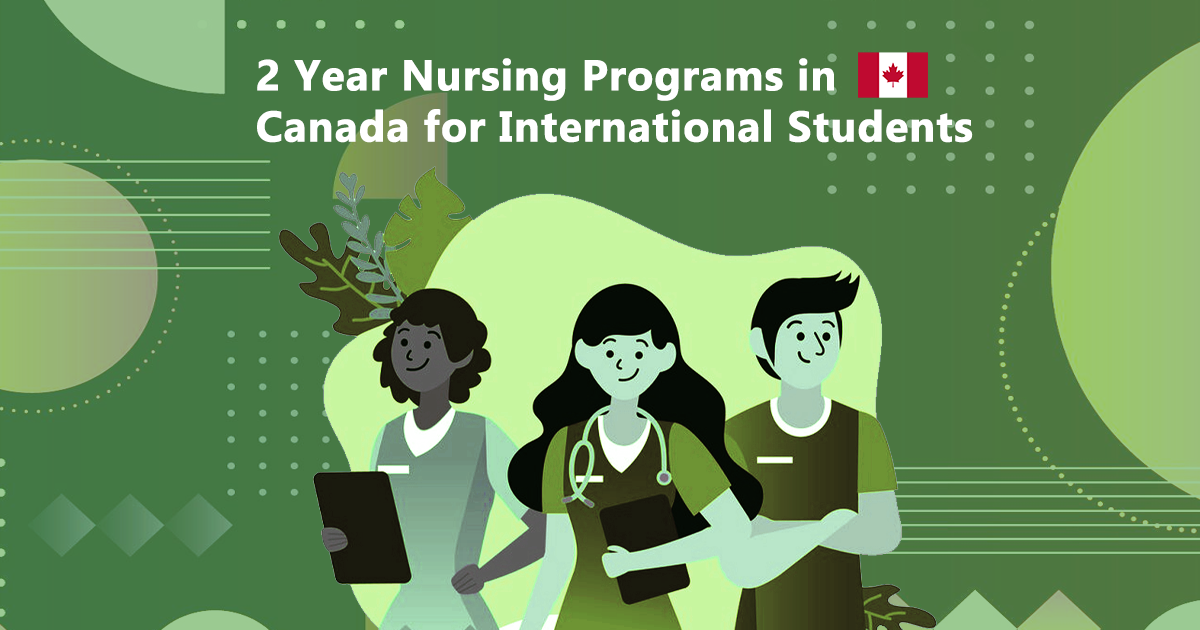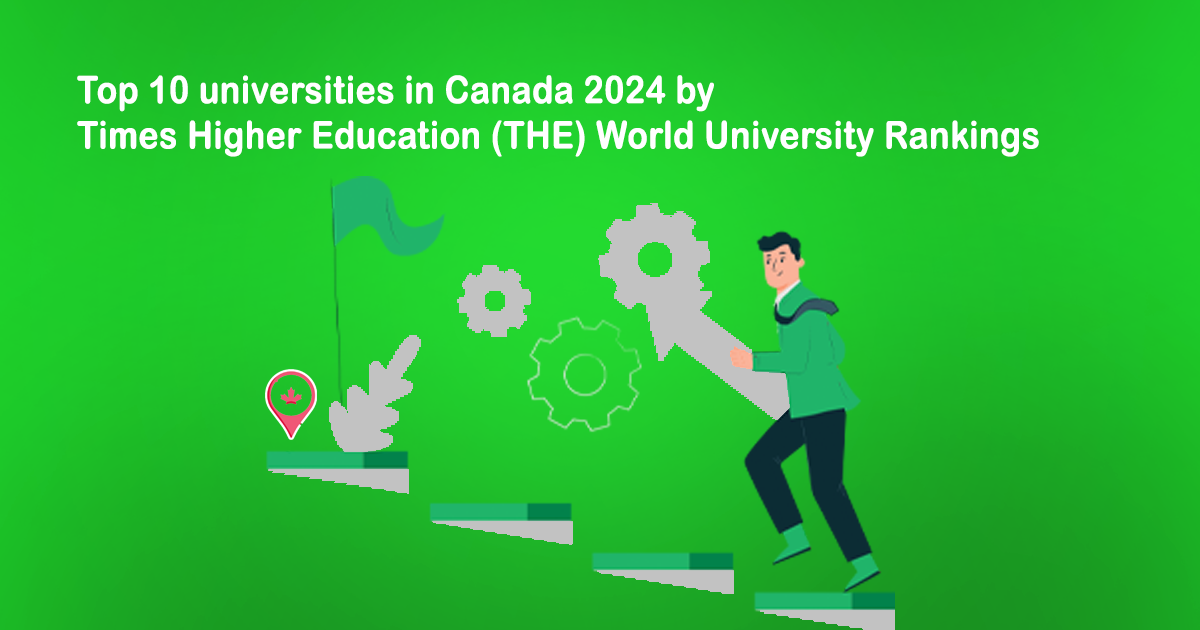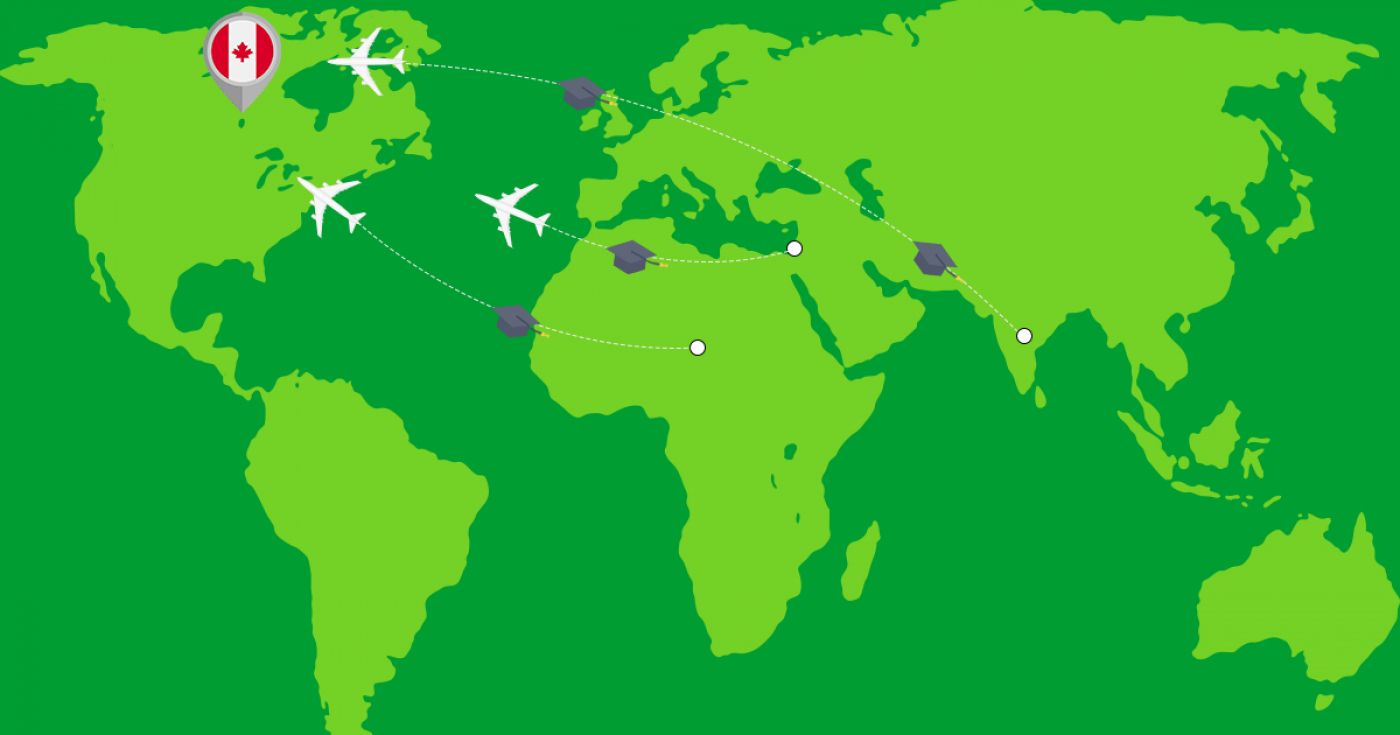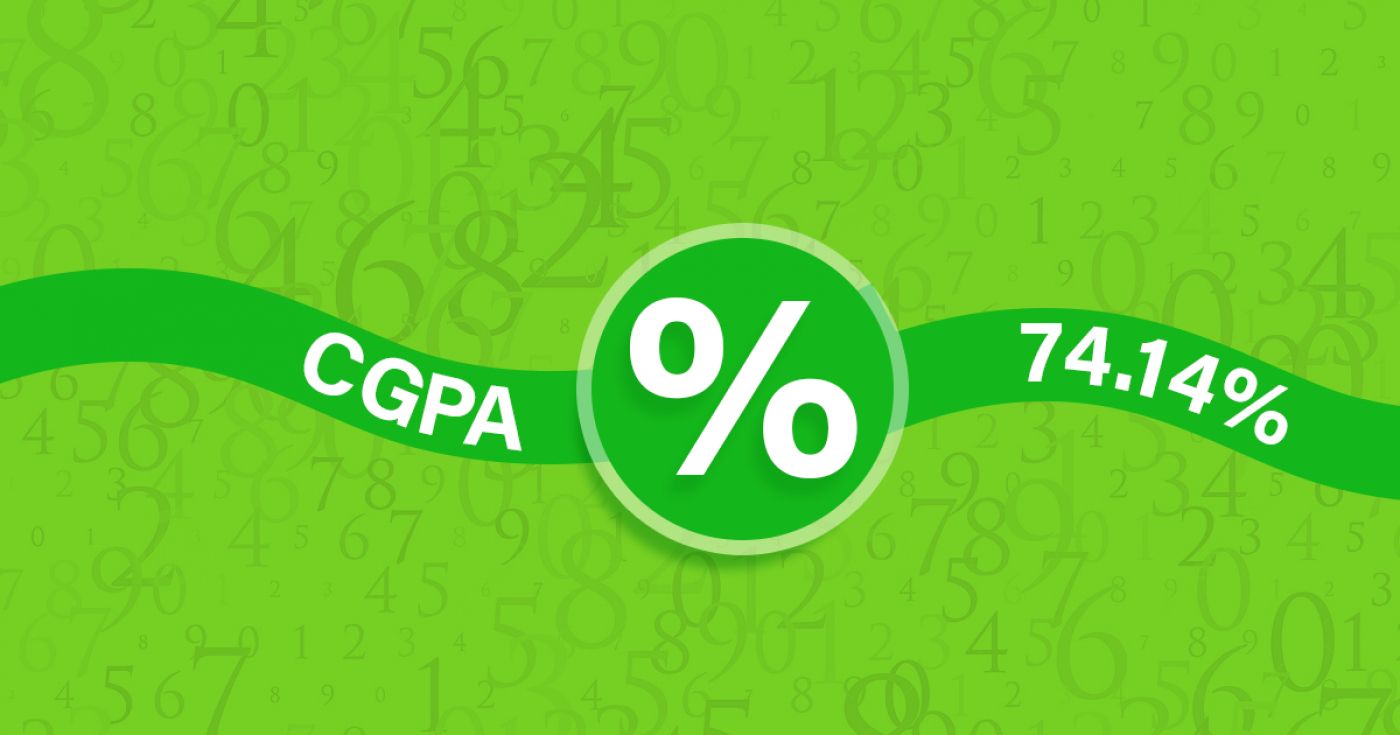Diploma in Computer Systems Technician - Information Technology Infrastructure and Services (Co-op Optional)
at Humber College North Campus Canada
Overview
Computer Systems Technician - Information Technology Infrastructure and Services diploma program prepares you for careers in Information and Communications Technology (ICT). You will build a foundation in electrical and logic circuits, and programming. You will also learn about the main hardware and software components of your computer and different features to improve performance of computer systems. Curriculum in the program prepares you for the role of system administrator whose responsibilities include installation, configuration and managing various operating systems including Microsoft servers, different distributions of Linux supported by virtualization tools and network infrastructure, supporting data and network security. You will also learn about data centre technologies that support small- and medium-sized businesses. You will gain knowledge in supporting public, private, and hybrid cloud environments, and integrating cloud technologies and services.
The program will give you hands-on experience with various hardware platforms, protocols and services with a strong emphasis on network and data systems security. You will have access to state-of-the-art infrastructure to deploy and support Linux and Microsoft operating systems, and administer web servers and applications using different scripting environments.
Our faculty collaborates very closely with industry partners to keep the program and curriculum current and relevant, so that you have the knowledge and skills to work in a cutting-edge high tech sector. You will learn from professors who are experienced industry professionals who have strong connections to companies in the Greater Toronto Area (GTA).
Your group projects help you build essential customer service skills, and develop your interpersonal communications and teamwork skills. This, alongside your new comprehensive technical credentials, will give you a multi-dimensional background that employers want.
Learning Outcomes
Upon successful completion of the program, a graduate will:
- Analyze and resolve information technology problems through the application of systematic approaches and diagnostic tools.
- Support the implementation and administration of computer systems.
- Support the implementation and administration of networking solutions.
- Install, configure, troubleshoot, maintain, and upgrade components of computer systems.
- Install, configure, troubleshoot, maintain and upgrade components of networks.
- Use a variety of scripting tools and languages to automate routine tasks.
- Follow, monitor, and document data storage procedures designed to ensure the integrity of information.
- Apply knowledge of security issues to implementation of information technology solutions.
- Provide efficient and effective technical support to clients in a manner that promotes safe computing practices and reduces the risk of issue recurring.
- Conform to workplace expectations found in Information Technology (IT) environments.
Optional Co-op
- This program offers a co-op option. Co-op work terms enable you to apply your skills and knowledge in a work environment and gain valuable, practical experience related to your program of study. You will learn new skills, learn about the world of work and meet people in your profession.
- For students who are accepted into the program, one co-op work terms will take place between Semesters 3 and 4. There are limited spaces in the co-op option. Therefore, you will apply for the co-op option during Semester 1 and be informed of the process by which to apply. While co-op work opportunities are not guaranteed, as students are in a competitive job placement market, participating students will receive a wide range of services to help them find a co-op opportunity.
- Contribute to the successful completion of the project applying the project management principles in use.
30
Application Processing Days
Under Graduate
Program Level
Fact & Figures
Full Time On Campus
Study Mode
24
Duration
Humber College North Campus
Location
Diploma in Computer Systems Technician - Information Technology Infrastructure and Services (Co-op Optional) Assistant Fee
$17618
Tuition Fee
$12000
Average Cost of Living
$75
Application Fee
Diploma in Computer Systems Technician - Information Technology Infrastructure and Services (Co-op Optional) Admissions Requirements
- Minimum Level of Education Required: To be accepted into this program, applicants must have Grade 12 / High School Diploma or equivalent including the following required course(s):
- Grade 12 English (ENG4C or ENG4U or equivalent)
- Grade 12 Mathematics (MAP4C, MCT4C, MDM4U, MCB4U, MGA4U, MCV4U or MHF4U or equivalent)
- Two Grade 11 or Grade 12 C, M or U courses in addition to those listed above

Get superfast admissions at top Diploma in Computer Systems Technician - Information Technology Infrastructure and Services (Co-op Optional) institutes in 2024
Benefits of choosing
➤Admission’s guaranteed at Top institutes across the world.
➤Enjoy exclusive application fee waiver’s with Edmissions.
➤Unlimited FREE Counselling sessions with Edmission’s
Experts
➤Get Tips from industry veterans to crack the IELTS exam in 1
week.
➤Assistance with scholarships, loans, forex, student accommodation and visa guidance.
Work Permit Canada
Students who wish to work in Canada require a work permit to do so. A student in Canada can work part-time during the course of his studies and full-time during holidays and semester breaks and post the completion of their course/program.
Rules for getting a part-time work visa in Canada
You can also work part-time on campus at your university.
Work Permit
Duration
Your part-time work permit will be valid for as long as you have a valid study permit.
Working Hours
20 Hours/Week
As a full-time student, you can work for a maximum of 20 hours a week. However, you can work full- time during holidays and breaks.
Document Required to Work in Canada
List
To apply for a work permit, you will need a study permit that mentions that you are allowed to work part-time on campus.
Social Insurance Number
Study Permit
You will need a Social Insurance Number (SIN) to Service Canada. if you wish to work in Canada during the course of your studies. To apply for the same, you need a valid study permit, and you should be a full- time student at a recognized university.

You can work part-time off-campus if you are studying in the Quebec province.
Duration of Work Permit Canada
Your part-time work permit will be valid for as long as you have a valid study permit.
Work Hours Canada
As a full-time student, you can work for a maximum of 20 hours a week. However, you can work full- time during holidays and breaks.
Document Required to Work in Canada
To apply for a work permit, you will need a study permit that mentions that you are allowed to work part-time on campus.
Social Insurance Number
You will need a Social Insurance Number (SIN) to Service Canada if you wish to work in Canada during the course of your studies. To apply for the same, you need a valid study permit, and you should be a full- time student at a recognized university.
Working after completing your course
In Canada, you will need a work permit to get a full-time job in Canada after finishing your studies. You chose a work permit like the Post-Graduation Work Permit (PGWP) if you wish to stay back in Canada and work full-time.
Visit Government of Canada Website for more detail
Post-Graduation Work Permit (PGWP)
The Post- Graduation Work Permit (PGWP) allows you to work for three years in Canada if you have completed a two years degree or more.
Application
how can i apply
You can either apply online or download the form and mail the application along with the required documents. Pay your fee and then wait for the decision to come.
Application Documents Required
List
To apply for the work visa, you need a degree from a recognized and accredited Canadian University along with an intention to stay and work in Canada only temporarily.
When to Apply?
One can apply for the full-time work permit in the first three months post the completion of their course during which the study permit is still valid.
How long does it take?
90 days
You will have to wait for 90 days for the decision on your work permit.
Duration
3 Years
The work permit is valid for 3 years if you have completed a two years degree program or more.
Fees
CAD 255
The fee for the work permit is CAD 255 plus the holder fee and the work permit processing fee.
Monthly Wages
CAD 1,600
An applicant is guaranteed a minimum salary of CAD 1,600 per month while working in Canada. This amount though varies on the job and the province you are working in.
Work Hours Canada
No Limit
There is no maximum limit, and you can work for as many hours as you want on the full-time work permit.

Required Documents
List
To apply for the work visa, you will need the following documents:
- Forms: IMM 5710, IMM 5476 and IMM 5475;
- Graduation Proof
- Proof of payment of work permit fees
- Copies of your travel and identification documents, passport pages and current immigration document.
Till a decision is made on your work visa, you can continue to work full time. All you need to have is your completed degree, should have applied for the permit before the expiry of your study permit and you should be allowed to work off-campus.
Information
Disclaimer
The information provided about the work permit is true and complete to the best of our knowledge. All recommendations are made without any guarantee on the part of the author or the publisher. The author and the publisher, therefore, disclaim any liability in connection to and with the use of this information.
Detailed Program and Facts
30
Application Processing Days
Full Time On Campus
Program Intensity
Under Graduate
Program Level
24
Duration
Study Visa
Student Visa For Canada
Any student who wishes to study in Canada requires a student visa. Some of the essential information for the application process is given below.
When Should I Apply?
4 to 6 months
Ideally, one should apply for the study permit at least 4 to 6 months before the commencement of your course/program.
Bank Account
No Need!
There is no need for a blocked bank account to apply for a student visa to Canada.
Duration of visa
Course Duration + 3 Months
The student visa is valid for the entire period of your course plus three months.
Time to Wait for Visa
35 Days
It takes time. It might take up to 35 days post your interview for the application process to complete and for you to finally receive your visa.
Appointment
Required
It varies from applicant to applicant, but one may have to take part in one or two visa appointments, namely a medical examination and a visa interview.
How you can apply
Application Process
An applicant can either apply online or offline by visiting a visa application centre and submitting their documents. After the analysis of your application, you might be called for an interview.
Fee
Visa Fee
The visa application fee for Canada is CAD 150.
Minimum Funds
833 CAD, 917 CAD
You require a minimum monthly amount to be deposited into your account to prove that you can sustain yourself while studying in Canada. If you are studying in Quebec, you need to have a monthly minimum of CAD 917, and if you are studying in a province except for Quebec, you need to have a minimum of CAD 833 per month.
Any other expenses
Required
You will have to pay a medical examination fee and a visa application service fee to the tune of CAD 15 if you visit a visa application centre to apply for your visa.

Medical Examination
Required
One has to undergo a series of medical examinations to be deemed fit for a student visa of Canada. The tests mostly include blood and urine tests, chest x-rays and other organ checkups.
Language Skills
Not Required
one doesn’t need to prove their language skills in applying for a Canadian Visa.
Disclaimer: The information provided about the work permit is true and complete to the best of our knowledge. All recommendations are made without any guarantee on the part of the author or the publisher. The author and the publisher, therefore, disclaim any liability in connection to and with the use of this information.
Other Courses by Humber College North Campus,Canada
Skilled Trades
Diploma in Industrial Woodworking Technician
The Industrial Woodworking Technician diploma program (located at the Humber Centre for Trades & Technology) provides you with the knowledge and skills to construct and install basic cabinets, as well as build traditional furniture using recognized trade practices. By completing a series of woodworking projects, students explore various types of joinery and construction techniques using hand tools, portable power tools, stationary machines, as well as computer-based technologies. Time management skills and the ability to work to a deadline are developed and stressed throughout the program. Graduates of the program will be able to produce shop drawings, calculate a list of materials, cut out and assemble basic cabinetry or furniture, and apply a finish. Graduates are able to safely operate most common stationary woodworking machinery, as well as program and run a number of CNC machines.
Employer interest in our graduates has grown steadily during the program’s history. We offer a comprehensive program that provides a solid grounding in woodworking and prepares a student for employment in a wide range of areas including store fixtures, architectural millwork (doors and windows), the kitchen cabinet industry, and furniture construction. Our advisory committee of industry professionals reviews our curriculum and ensure that students are receiving relevant training to prepare them for work in a range of woodworking related fields.
12 month
Duration
$ 26202
Tuition
Architecture and Construction
Advanced Diploma in Construction Engineering Technology (Co-op Optional)
Humber’s Construction Engineering Technology program is one of three stackable programs within the Carpentry-Construction group. Along with the Carpentry and Renovation Techniques certificate and the Building Construction Technician diploma, the program introduces you to the carpentry trade, gives you practical experience with trade regulations and with best practices. Students will be able to move from various certificate and diploma programs into the advanced diploma program (including Carpentry and Renovation Technician, Industrial Woodworking Technician, Carpentry and Renovation Techniques, and Building Construction Technician).
The advanced diploma program is designed to explore the construction industry from an engineering and management perspective. You will become familiar with the strategies required for project planning and execution for the commercial-based industry.
Throughout the program, you will learn about compliance with workplace health and safety practices and procedures in accordance with legislation and regulations. You will also learn how to ensure that work is performed in compliance with contractual obligations, applicable laws, standards, bylaws, codes and ethical practices. Coursework will include sustainability practices. Teamwork, leadership, and supervisory and interpersonal skills will be emphasized.
Key learnings will include:
- Collecting, processing, analyzing and co-ordinating technical data to produce project-related documents
- Co-ordinating and facilitating the collecting, processing, interpreting and application of survey/geomatics and layout information
- Selecting and using industry-specific technologies
- Monitoring projects through principles of construction project management
- Preparing estimates
- Performing, co-ordinating and facilitating quality control testing
Optional Co-op
This program offers a co-op option. Co-op work terms enable you to apply your skills and knowledge in a work environment and gain valuable, practical experience related to your program of study. You will learn new skills, learn about the world of work and meet people in your profession.
For students who are accepted into the program, two co-op work terms will take place. The first four-month work term is between Semesters 2 and 3, and the second four-month work term is between Semesters 4 and 5. There are limited spaces in the co-op option. Therefore, you will apply for the co-op option during Semester 1 and be informed of the process by which to apply. While co-op work opportunities are not guaranteed, as students are in a competitive job placement market, participating students will receive a wide range of services to help them find a co-op opportunity.
36 month
Duration
$ 16394
Tuition
Health Sciences, Nursing and Emergency Services
Diploma in Biotechnology
Humber’s Biotechnology diploma program prepares graduates with the transferable skills needed to build successful careers in a variety of biotechnology and research sectors. The program balances theoretical understanding with experiential practices in specific laboratory skills needed by employers. These practical components are the focus of the program and are developed and reinforced through an integration of practical laboratory experiences. Integrative laboratory projects are designed to simulate a real life experience through translation of theory to practice. The program provides a valuable specialization to students interested in life sciences programs without having to go elsewhere for practical laboratory skills training.
Students will benefit from:
- Laboratory skills development linked to industry demands
- Extensive applied/hands-on laboratory experience
- Simulated learning environments
- Integrative project work that links applied and academic fields (simulating real work experiences)
- Acquiring a recognized skill set applicable to a wide variety of employment opportunities
- A unique integrated approach
- Learning to operate laboratory equipment stable in the field of science and biotechnology
- Learning to adapt to the changing field and stay current
24 month
Duration
$ 16394
Tuition
Business & Management
Diploma in Business in Accounting
Humber’s Business – Accounting diploma program provides you with a well-rounded accounting education with training in accounting procedures and theory, taxation, business law, information systems, and management. Supported by our state-of-the-art Accounting Centre, you’ll learn best practices in accounting and become skilled at using industry-standard software including Profile (personal tax), Access, Excel, Quickbooks, SAGE 50 Accounting (formerly known as Simply Accounting) and SAGE Accpac Plus.
You will learn accounting from industry-connected faculty who are committed to providing you with practical, hands-on accounting training to help you get ahead. Our program’s versatile range of courses helps you develop broad-based business skills including human resource administration, business writing, macroeconomics and finance. At any time, you can transfer to the three-year Business Administration – Accounting advanced diploma program, with an optional co-op opportunity.
You may choose to study for four consecutive semesters if you wish to accelerate your path to graduation.
24 month
Duration
$ 16394
Tuition
Hospitality, Tourism, Wellness Leisure & Sports
Diploma in Nutrition and Healthy Lifestyle Promotion
Humber’s Nutrition and Healthy Lifestyle Promotion diploma program prepares you for a career promoting health and wellness to individuals and groups of all ages, and encouraging people to live a healthier lifestyle. Unique in nature, it is the only diploma program of its kind in Canada. In this program you will:
- Develop an understanding and knowledge of general and clinical nutrition, sport nutrition and physiology
- Gain valuable hands-on experience coaching and conducting health promotion seminars and workshops in our unique Humber Centre for Healthy Living
- Learn how to relate knowledge of essential nutrients into practical nutritious eating for clients by discovering the techniques of healthy cooking, food demonstration, recipe development and menu planning
- Nutritionally assess and analyze menus and recipes integrating financial, health and culinary criteria
You will have the opportunity to join student branches of the Canadian Association of Foodservice Professionals (CAFP). As student members, you will build on your networking skills in foodservice organizations and have the opportunity to apply to association-sponsored bursaries and scholarships.
This innovative program will provide you with the education and experience to work in the rapidly growing health and wellness industries. The curriculum is founded on evidence-based nutrition information and is taught by registered dietitians and other regulated health-care professionals.
Learning Outcomes
Upon successful completion of the program, a graduate will:
- Conduct assessments of nutritional status, well-being, and lifestyle for clients low to moderate risk and effectively communicate assessment results.
- Apply knowledge of fundamental and clinical nutrition to prescribe appropriate diets, active living, and lifestyle programs to enhance nutritional status, health, and well-being of clients of low to moderate risk.
- Utilize appropriate interviewing and behavior change coaching and counseling skills to promote or enhance nutritional status, health, active living, and well-being of clients.
- Collaborate with individuals in the selection and adoption of strategies to improve their nutritional status, health, and well-being.
- Develop, revise and evaluate food items, recipes, and menus to maximize the nutritional content of healthy eating plans.
- Apply knowledge of the global food supply, sustainability and food technology in the development and revision of recipes, menus and healthy eating plans for individual and groups of clients.
- Develop, implement, and evaluate programs and events which respond to identified needs and interests of clients and maximize the benefits of diet, health, and well-being.
- Contribute to community health promotion strategies to improve the health of individuals, groups, organizations and institutions.
- Assist in the development of business plans for health and wellness programs, activities, and facilities.
- Develop and implement risk management strategies to ensure standards and regulations for food safety and sanitation are met.
- Implement ethical practices and ongoing personal and professional growth and development plans.
- Interact effectively and professionally with clients, staff, and volunteers in health and wellness programs, activities, and facilities.
Work Placement
All students will complete a 15-week experiential learning course involving our on-campus Humber Centre for Healthy Living. Components of this placement include:
- Nutrition awareness events: students develop and deliver group educational workshops, displays and sessions for community, business and industry partners in various settings
- Practising nutrition coaching to Humber students and staff: students provide nutrition education for clients and support them in developing and achieving their health and nutrition related goals. This includes diet assessment, recommendations and development of a client tool kit
24 month
Duration
$ 16414
Tuition
Hospitality, Tourism, Wellness Leisure & Sports
Diploma in Baking and Pastry Art Management
Humber’s Baking and Pastry Arts Management diploma program, taught in our state-of-the-art baking and pastry labs, is designed to propel you into a career in the baking and pastry industry. Learn how to make impressive confectionery creations such as:
- Chocolate sculptures
- Wedding and specialty cakes
- Tarts and pastries
- Plated desserts
- Artisan breads and breakfast pastries
- Petit fours
- Ice cream, gelato and sorbets
- Blown, pulled and cast sugar pieces
- Large quantity production
You will gain hands-on experience working in various settings, individually and as a team member, creating baking and pastry delicacies. The first year of the program consists of foundational courses while in second year, you begin in-depth training in baking and pastry arts. You will learn the foundation of traditional and contemporary techniques in baking and pastry arts management exploring measurements, safety and sanitation, and various types of dough. As well, you’ll study the emerging opportunities of this specialized field, international trends and applications used in the industry. Areas of study in the program also include courses in business and career management, entrepreneurship, and computer applications for the food-service industry, as well as general education and communications courses. Our seven on-campus kitchen labs comprise the most modern facilities in the world. Among them are the award-winning culinary demonstration theatre and kitchen lab, induction cooking labs with high-tech exhaust and theatre-style seating and cooking demonstration area.
Qualified students will complete an unpaid work placement in the baking and pastry industry in the Greater Toronto Area for seven weeks in the fourth semester (40 hours per week). Students will also be able to apply for placements across Canada and Europe, which have jump-started many successful careers.
24 month
Duration
$ 16394
Tuition
Health Sciences, Nursing and Emergency Services
Advanced Diploma in Traditional Chinese Medicine Practitioner
Humber’s Traditional Chinese Medicine (TCM) Practitioner advanced diploma program is the first and only publicly funded program of its kind offered at a postsecondary institution in Canada. This intensive program is grounded in the TCM Practitioner skillset which has been approved by all provincial TCM regulators in Canada and provides students with the skills and professional experience necessary to become a TCM Practitioner in Ontario. Through a combination of theoretical course-based instruction, as well as several clinical placements, you will gain a necessary understanding of Traditional Chinese and Western medicine practices. Moreover, graduates of the TCM Practitioner program will be trained to conduct a TCM diagnosis and develop appropriate treatment plans by utilizing their skills in acupuncture, herbal medicine, clinical practice management, professionalism and safety. This program is also committed to the promotion of evidence-informed practice of TCM through scientific research.
Learning Outcomes
Upon successful completion of the program, a graduate will:
- Critically analyze and evaluate Traditional Chinese Medicine Practitioner (TCMP) theories and treatment methods to develop professional knowledge and skills required for the profession.
- Assess, diagnose and treat patients using Traditional Chinese Medicine Practitioner (TCMP) principles, knowledge and treatment methods including acupuncture, herbal medicine, internal and external medicine.
- Perform safe, ethical and effective TCMP skills within a clinical setting.
- Evaluate patients incorporating a bio-medical approach with Traditional Chinese Medicine Practitioner (TCMP) examination techniques to formulate a TCMP diagnosis and treatment strategy, and perform the treatment in a skillful and professional manner.
- Communicate effectively and educate patients, families, the community and other healthcare providers when providing TCMP practices.
- Advocate for Traditional Chinese Medicine as an effective complementary medicine.
- Adhere to the relevant provincial and federal legislation governing the profession while engaging in safe practices.
- Access current and pertinent research regarding practitioner self-care to maintain a healthy practice.
- Maintain client and business records using professional business practices of a TCMP.
- Establish interprofessional relationships with TCM colleagues and healthcare team members.
- Develop a plan for personal and professional development to enhance work performance and maintain currency in the field.
- Evaluate and implement environmentally related initiatives relevant to the Traditional Chinese Medicine Practitioner (TCMP) profession.
- Apply basic entrepreneurial strategies to identify and respond to new opportunities.
Work Placement
- There are seven mandatory clinical placements that provide students with progressive, professional practice experience in diagnosing, preparing treatment plans, inter-professional collaboration and safe practices. Clinical placements occur throughout the year at community TCM and multi-discipline clinics within the greater Toronto area, as well as at our on-site partner clinic, the Tzu Chi Clinic of Traditional Chinese Medicine. The clinical component of the program offers more than 800 hours of direct patient contact, which exceeds the regulatory body minimum requirement of 500 hours.
36 month
Duration
$ 16414
Tuition
Public Safety and Legal Studies
Graduate Certificate in Paralegal
Humber’s Paralegal graduate certificate program prepares you for an exciting career in the legal field. You will gain skills in legal research, oral and written advocacy, critical thinking and problem solving through a case-based and problem-based learning environment. You will develop your oral advocacy skills through active learning including presentations and mock trials.
Courses include tort and contract law, residential landlord and tenant law, employment law, small claims court, provincial offences and summary convictions, and administrative tribunal law and procedures. Studies in legal accounting, business planning, ethics and entrepreneurship help prepare you to set up and manage your own paralegal professional practice.
Learning Outcomes:
Upon successful completion of the program, a graduate will:
- Work within areas of permitted practice and articulate limitations on representation for paralegals.
- Develop and assess strategies which adhere to the professional and ethical requirements of the Paralegal Rules of Conduct.
- Research, analyze, interpret and apply the provisions of legislation and case law to client situations using proper legal citation methods.
- Conduct trial and tribunal advocacy in accordance with the permitted scope of practice of a paralegal by utilizing the applicable structure, process, and jurisdictional authority of courts and administrative tribunals.
- Select and employ effective human relations, interpersonal, and intervention strategies to assist in resolving conflicts.
- Develop a coherent case management strategy and execute it effectively.
- Select and utilize information technology resources and current industry computer software.
- Communicate effectively and persuasively, both orally and in writing, using accurate legal terminology.
- Create legal documents and correspondence required for use by clients and on behalf of clients.
- Investigate and utilize paralegal business practices competently and effectively.
- Demonstrate effective time management and organizational skills to meet the timelines and limitation periods within a legal environment.
- Identify and apply discipline specific practices that contribute to the local and global community through social responsibility, economic commitment and environmental stewardship.
12 month
Duration
$ 26202
Tuition
Journalism & Media
Diploma in Photography
Photography diploma at Humber is one of the most highly regarded and longest-running photographic training programs in the country. In this two-year program, you will develop both a professional skillset and creative thinking abilities to become job ready for the visual communications industry.
Through the four semesters of study, students learn advanced photographic techniques giving them the ability to bring their visual imaginations to life. Classes are hands-on, and you will develop additional skills in planning, production and post-production. These assets, along with soft skills in communications and networking, will give you the solid foundation needed for your career ahead.
From advertising photography to editorial and portraiture, to motion capture and e-commerce imaging, you will graduate from this program prepared to engage fully in a wide range of visual imaging career options. In this program, you will:
be trained on full frame DSLR and medium format digital cameras, along with professional studio and location lighting and grip equipment
learn to be an effective visual storyteller across multiple platforms
produce corporate video and audio for the web and other applications
produce assets from client layouts for digital and print end use
shoot professional photographic images in both the studio and on-location environments
print professional archival digital and one-of-a-kind analogue prints
capture, process and edit content using current software applications such as Photoshop, Lightroom, Capture One Pro and Premiere Pro
learn the business side of photography including quoting, invoicing and building working relationships with clients
Courses are designed with industry input, ensuring you are learning current and relevant information in state-of-the-art studios and labs from industry experts – people who know the trends and effective methods of visual communications.
Following a work placement in final semester, the program culminates with a graduate portfolio show where students network with industry, and introduce their skills with portfolios, video footage and large format prints.
24 month
Duration
$ 16414
Tuition
Skilled Trades
Certificate of Achievement in Cabinet Making
Humber’s Cabinet Making certificate program, located at the Humber Centre for Trades & Technology, provides you with the knowledge and skills to construct and install basic cabinets, as well as build traditional furniture using recognized trade practices. By completing a series of woodworking projects, you will explore various types of joinery and construction techniques using hand tools, portable power tools, stationary machines, as well as computer-based technologies. Time management skills and the ability to work to a deadline are developed and stressed throughout the program.
Graduates of the program will be able to produce shop drawings, calculate a list of materials, cut out and assemble basic cabinetry or furniture and also apply a finish. Graduates are able to safely operate most common stationary woodworking machinery, as well as run a number of CNC machines in a limited capacity.
12 month
Duration
$ 16394
Tuition
View All Courses by Humber College North Campus, Canada
Top Study Abroad Exams
Popular Universities to Study Abroad
- University of Waterloo
Waterloo
- University Canada West
Vancouver
- University of Windsor
Windsor
- Cape Breton University
Sydney
- Dalhusie University
Halifax
- Carleton University
Ottawa
- University of Ottawa
Ottawa
- University of Guelph
Guelph
- Explore more colleges in Canada
- University of New Haven
West Haven
- Kent State University
Kent
- Wright State University
Dayon
- San Jose State University
West Haven
- Clark University
Worcester
- Rowan University
Glassboro
- Golden Gate University
San Francisco
- Arkansas
San Francisco
- Explore more colleges in USA
- Coventry University
Coventry
- University of Birminghame
Birminghame
- De Montfort University
Leicester
- Cardiff University
Cardiff
- BPP University
London
- University of West London
London
- University of Nottingham
Nottingham
- University of Warwick
Coventry
- Explore more colleges in UK
- Auckland Institute Of Studies
Auckland
- Massey University - Auckland Campus
Albany
- Eastern Institute of Technology - Auckland Campus
Auckland
- NorthTec - Auckland Campus
Auckland
- Massey University - Manawatu Campus
Palmerston North
- University of West London
London
- Wellington Institute of Technology (WelTec) - Petone Campus
Lower Hutt
- Otago Polytechnic - Dunedin Campus
Dunedin
- Explore more colleges in New Zealand
- Chandigarh University
Mohali
- Parul University
Vadodara
- Sharda University
Greater Noida
- Jain University
Bangalore
- Bennett University
Greater Noida
- Lovely Professional University
Phagwara
- Chitkara University
Rajpura
- Brainware University
Kolkata
- Explore more colleges in India
- Abu Dhabi University
Abu Dhabi
- Gulf Medical University
Ajman
- New York University
Abu Dhabi
- Emirates Aviation University
Dubai
- Higher Colleges of Technology
Dubai
- British University in Dubai
Dubai
- Al Ghurair University
Dubai
- American University in the Emirates
Dubai
- Rochester Institute Of Technology Dubai
Dubai
- Emirates Academy of Hospitality Management
Dubai
- American University of Ras Al Khaimah
Ras Al Khaimah
- Explore more colleges in UAE
- Ras Al Khaimah Medical and Health Sciences University
Ras Al Khaimah
Explore Colleges and Courses in Canada
- Arts & Humanities in canada
- Business & Management in canada
- Natural Sciences & Mathematics in canada
- Engineering & Technology in canada
- Computer Science & IT in canada
- Health Sciences, Nursing and Emergency Services in canada
- Social Sciences in canada
- Creative Arts & Design in canada
- Hospitality, Tourism, Wellness Leisure & Sports in canada
- Environmental Studies & Earth Sciences in canada
Latest Blog Posts
Trending Blog Posts
Search, Shortlist, Apply and get accepted! It’s that Simple to pursue your dream to Study abroad with Edmissions. Our team of experts provide you the right guidance that helps you to take admission in your dream college in countries like Canada, the USA, the UK
© 2021-2024 Edmissions - All rights reserved.
TALK TO OUR EXPERTS











